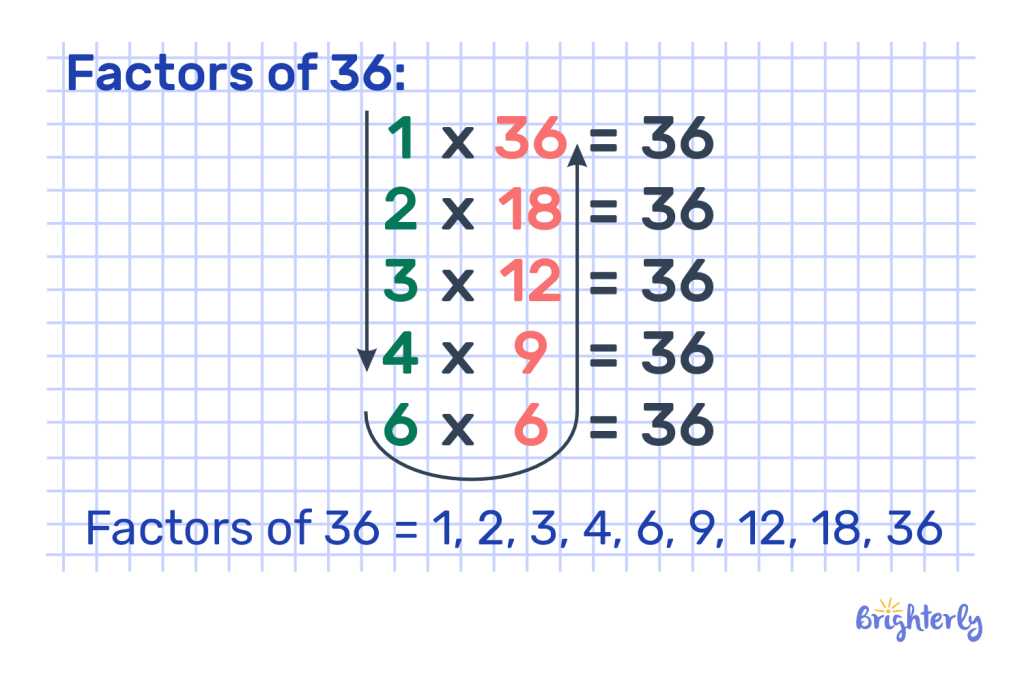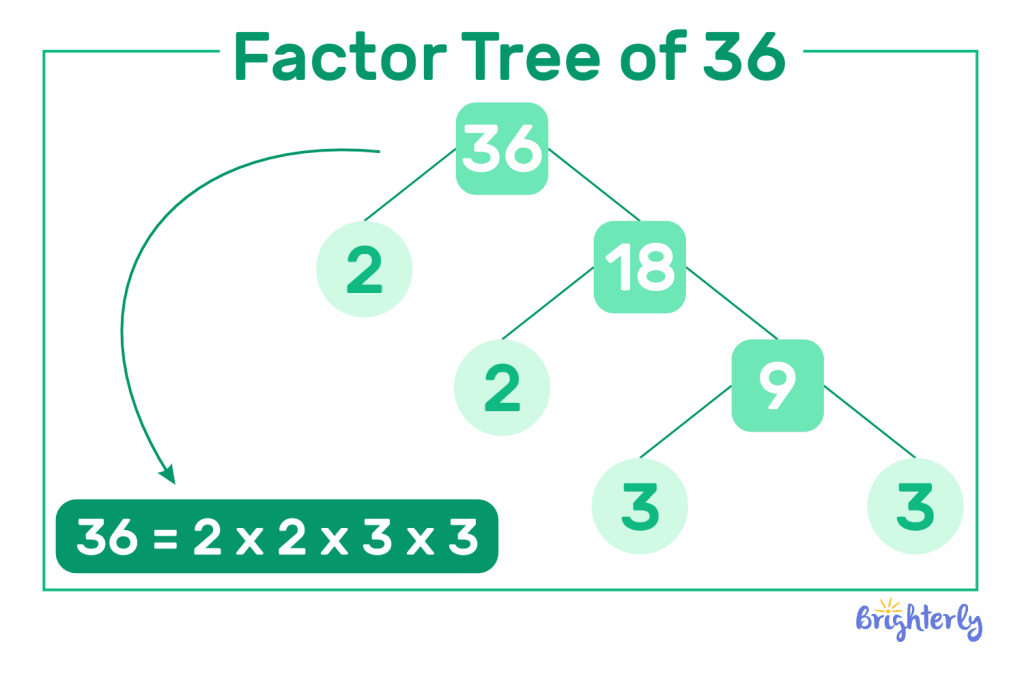Factors of 36 – Definition With Examples
Updated on November 3, 2025
Factors are a key element of math that can help us understand multiplication and division. They can also help you build the key foundational skill of number sense.
Today, we’re going to delve into factors of 36. Here, we’ll cover all the factors of 36, their properties, how to find the factors of 36 and equations related to factors of 36. We’ll also share some practice problems to help you tackle puzzles around factors of 36 with ease!
What are factors of 36?
Factors of 36 are numbers that multiply to 36. Factors are integers (aka whole numbers) that can be multiplied to create another number, and 1 and the number itself are always factors.
Definition of factors of 36
The definition of factors of 36 is whole numbers that can be multiplied with another number to make the number 36. More widely, the definition of factors is numbers that can be multiplied to make another defined number.
All the factors of 36
- 1
- 2
- 3
- 4
- 6
- 9
- 12
- 18
- 36
Here, we list the factors of 36 👇

Properties of factors of 36
There are lots of properties of factors of 36 that make them interesting. Let’s explore some of those properties!
- The factor pairs of 36 are 1 and 36, 2 and 18, 3 and 12, 4 and 9 and 6 and 6
- The number 1 is the multiplicative identity, meaning any multiplied by it results in itself
- Number 2 is the smallest prime number, and it is also the only even prime number
- The number 3 is the second-smallest prime number and is the first odd prime number
- Number 4 is the first composite number and the second square number
- The number 6 is the first perfect number (its divisors add up to 6)
- Number 9 is 32 and is the largest single-digit number
- Number 12 is the smallest abundant and semiperfect number
- The number 18 is a composite, abundant AND semiperfect number!
- Number 36 is 62 and is the sum of 13, 23 and 33
How to find the factors of 36?
The easiest way to find the factors of 36 is to go through each number in sequence and see if it can be multiplied by another whole number to make 36. You’ll see that 1, 2, 3 and 4 can all be multiplied to make 36, but 5 cannot.
As you go through the remaining numbers, you’ll also see that 6, 9, 12, 18 and 36 can be multiplied by another integer to make 36. Once you reach the number that is half the value of your number (here, that is 18), the only remaining factor will be the number itself (here, that is 36).
Equations related to factors of 36
The equations related to the factors of 36 are most commonly expressed as multiplication and division equations. Here are the multiplication equations related to factors of 36:
- 1 x 36 = 36
- 2 x 18 = 36
- 3 x 12 = 36
- 4 x 9 = 36
- 6 x 6 = 36
We can also use division to represent equations related to the factors of 36:
- 36 ÷ 1 = 36
- 36 ÷ 2 = 18
- 36 ÷ 3 = 12
- 36 ÷ 4 = 9
- 36 ÷ 6 = 6
Writing equations involving factors of 36
To write equations involving factors for 36, you’ll need to decide which factor of 36 you’re using and its factor pair — for example, in an equation using the number 9, its factor pair will be 4, making your equation 4 x 9 = 36.
Prime factorization of 36
You can also break 36 down into its prime factorization, aka its smallest possible prime factors. To start, divide 36 by its smallest prime factor, which is 2, giving you 36 ÷ 2 = 18.
Then, you continue dividing by this number until the number is no longer divisible. 18 ÷ 2 = 9.
As 9 isn’t divisible by 2, you divide it by the second-smallest prime number, which is 3. 9 ÷ 3 = 3. Then, 3 ÷ 3 = 1, and 1 isn’t divisible by 3.
Your prime factorization is therefore 2 x 2 x 3 x 3, or 22 x 32.

Practice problems on factors of 36
Now, let’s move onto some practice questions that you can try out yourself. These questions will help you understand factors, and specifically the number 36 factors.
- Write down all the common factors of 36 and their factor pairs
- You have 36 pieces of candy to share between 6 friends. How many pieces of candy does each friend get?
- Identify the prime factors of 36 and show your working. How do you know they are prime factors?
Conclusion
Here, we’ve answered the question, “What is the factor of 36?”, covered its prime factorization and showed you the equations related to factors of 36. Now, you can confidently answer math questions on factors of 36 and have a better understanding of factors more widely.
Factors of 36: Frequently asked questions
What are the factors of 36?
The factors of 36 are 1, 2, 3, 4, 6, 9, 1, 18 and 36. This means 36 is divisible by all of these numbers, and they can all be multiplied by another integer to make the number 36.
What are all the factors of 36?
All the factors of 36 are as follows:
- 1
- 2
- 3
- 4
- 6
- 9
- 12
- 18
- 36
Is 36 prime or composite?
36 is a composite number, because it has more factors than just 1 and itself. Prime numbers are numbers only divisible by 1 and themselves, meaning they don’t have any other factors. Composite numbers, however, have more factors than 1 and themselves, which 36 does.
What equals 36 in multiplication?
There are a lot of multiplication equations that equal 36 — also known as the factor pairs of 36. If you’re asking, “What equals 36?”, the answers are:
- 1 x 36 = 36
- 2 x 18 = 36
- 3 x 12 = 36
- 4 x 9 = 36
- 6 x 6 = 36
What is the prime factorization of 36?
The prime factorization of 36 is 2 x 2 x 3 x 3, which can be expressed as 22 x 32. Work this out by dividing 36 by its smallest prime factor, 2, and continuing until you can’t anymore. Then, move onto the second-smallest prime factor and so on.






